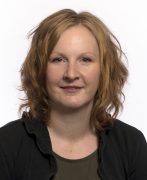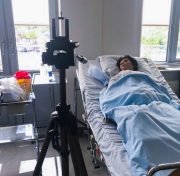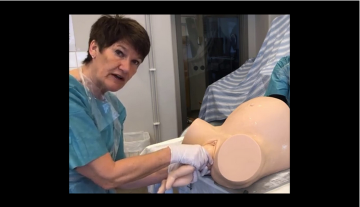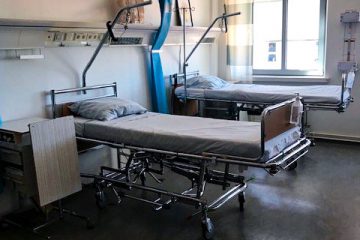DISTANCE EDUCATION. By adapting examination forms, those that are necessary can still be given at the Clinical Training Center (KTC). Only a few people are allowed on premises at the same time, and exams for students about to graduate have priority.
Shortly after the decision that the university would switch to online teaching, certain exceptions for clinical examinations at KTC were permitted.

“We have had an intensive and challenging period, but it has also been exciting since it has opened our eyes to how we can use more digital elements in our teaching even when we return to campus,” says Malin Lindberg, the head of KTC.
When the decision was announced that all teaching would take place online, KTC prioritized being able to offer adapted forms of exams for the students who will be graduating in June.
“We wanted to be prepared for students whose clinical placements were cancelled, but when we saw that the clinical training could largely be solved in other ways, we were able to offer necessary exams for other courses as well, though to a limited extent.”
Five per hall
Access to KTC’s premises has been restricted to a maximum of five people in each hall and no more than ten people in a corridor. All programs have been asked to list which exams need to take place, and then students farthest along in their programs have been given priority, as well as students who need to complete an exam to avoid deadlines that would prevent them from continuing their education.

One clinical training module requiring adaptation is cardiopulmonary resuscitation, which students in almost all Sahlgrenska Academy programs are to complete. When it was determined that there was general spread of the coronavirus in Sweden, the CPR Center ended the use of mouth-to-mouth resuscitation, since this is considered a high-risk activity for infections. During the pandemic, exams in CPR for nursing and radiology nursing students in semester 6 have been adapted to exclude mouth-to-mouth resuscitation.
Reversed exams

The new situation has required some creativity to allow the exams to take place. The midwifery program is one such example.
“They chose to reverse the exam so that it could be given online. The teachers were on site at KTC and the students participated via Zoom. The students then instructed the teachers how to act during a simulated delivery.”
Within the nursing program, all students in semesters 3 and 6 took exams at KTC. The students came in one by one and took the exam on site. One teacher was with the student in the hall and another teacher joined through Zoom.
“Regular exams have also been conducted in certain programs, like physiotherapy, where we have divided smaller groups between different corridors and time slots to reduce the flow and risk of the groups meeting each other.”
Practice rooms closed
 The practice rooms, where students can usually practice on their own, have been closed. Practice has been replaced partially by teachers filming and showing exercises in chat forums, where students can ask questions about clinical situations.
The practice rooms, where students can usually practice on their own, have been closed. Practice has been replaced partially by teachers filming and showing exercises in chat forums, where students can ask questions about clinical situations.
“These occasions have been greatly appreciated, and we see advantages with everyone having the opportunity to ask questions in the full group, so that everyone gets the same answer. This can result in more time for practical training, and we believe it is something we can continue with even after the pandemic, as a complement to KTC’s regular work,” says Lindberg.
TEXT: ELIN LINDSTRÖM










